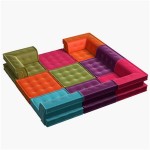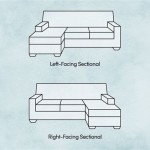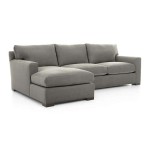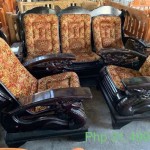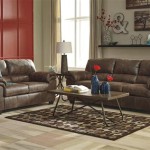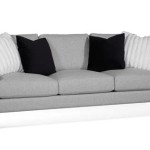Dfs Charcoal Grey Leather Sofa: A Comprehensive Overview
The Dfs charcoal grey leather sofa represents a popular choice in contemporary furniture, often praised for its blend of sophisticated aesthetics and perceived durability. This article aims to provide a comprehensive overview of this particular type of sofa, exploring its design characteristics, material considerations, maintenance needs, stylistic compatibility, and relative value proposition. The objective is to furnish potential buyers and interested observers with a detailed understanding, enabling informed decisions concerning its suitability for specific living spaces and lifestyle requirements.
The prevalence of charcoal grey as a color choice in interior design stems from its versatility. It acts as a neutral backdrop, allowing other design elements within a room to take center stage while simultaneously providing a grounding presence. This inherent neutrality allows for a wide range of accent colors to be incorporated, making it adaptable to evolving stylistic preferences. The selection of leather as the upholstery material also contributes to the sofa's appeal, often associated with luxury, longevity, and relatively easy cleaning in comparison to fabric alternatives.
Design and Construction
The design of a Dfs charcoal grey leather sofa can vary significantly depending on the specific model. Common configurations include sectional sofas, corner sofas, and traditional three-seater or two-seater sofas. The chosen configuration will often depend on the size of the room and the desired seating capacity. The frame construction is a crucial determinant of the sofa's overall durability and longevity. A solid hardwood frame, typically beech or birch, is considered the most robust option, offering resistance to warping and cracking over time. However, more affordable options may utilize engineered wood or a combination of solid and engineered wood, which can still provide adequate structural support but may not be as resilient over the long term.
The suspension system, located beneath the seat cushions, significantly influences seating comfort and support. Options include sinuous springs (also known as no-sag springs), which are interconnected metal springs that provide a firm and even support surface. Other options include pocket coil springs, which are individually wrapped springs that offer localized support and minimize motion transfer. Eight-way hand-tied springs are considered the premium option, providing exceptional comfort and durability, but are typically found in higher-end sofas.
The internal cushioning materials also play a critical role in the overall comfort and aesthetic appearance of the sofa. High-density foam is often used as a core filling, providing support and shape retention. The density of the foam directly impacts the sofa's firmness and its ability to resist sagging over time. To enhance comfort, a layer of feather or fiber padding may be added on top of the foam core. This combination provides a balance of support and plushness. The stitching and detailing, such as tufting or piping, contribute to the sofa's visual appeal and can significantly influence its overall style, ranging from modern minimalist to more traditional and ornate designs.
Material Properties and Maintenance
The term "leather sofa" can encompass a range of leather types, each with distinct characteristics and pricing implications. Full-grain leather, derived from the top layer of the hide and minimally processed, is considered the highest quality. It retains the natural markings and imperfections of the hide, adding character and developing a patina over time. Top-grain leather, where the outermost layer is sanded or buffed to remove imperfections, is a more uniform option but loses some of the natural character. Corrected-grain leather, which undergoes significant processing to correct imperfections, is a more affordable option but may not be as durable or breathable as full-grain or top-grain leather.
Bonded leather, composed of shredded leather scraps bonded together with adhesives, is the least expensive option and is often used in lower-priced sofas. While it may resemble genuine leather in appearance, it is less durable and prone to cracking and peeling over time. The specific type of leather used will significantly impact the sofa's price, durability, and maintenance requirements. Charcoal grey leather, regardless of the specific type, tends to be more forgiving than lighter colors in terms of stain visibility.
Maintaining a Dfs charcoal grey leather sofa involves regular cleaning and conditioning to preserve its appearance and longevity. Regular vacuuming using a soft brush attachment helps to remove dust and debris that can accumulate on the surface. Leather-specific cleaning products should be used to remove spills and stains, following the manufacturer's instructions. Harsh chemicals and abrasive cleaners should be avoided, as they can damage the leather's surface. Leather conditioner should be applied periodically to replenish the natural oils and prevent the leather from drying out and cracking. The frequency of conditioning will depend on the environment and the type of leather, but typically every six to twelve months is recommended. Protecting the sofa from direct sunlight is also crucial, as prolonged exposure can cause the leather to fade and dry out.
Stylistic Compatibility and Value
The charcoal grey leather sofa is a versatile piece of furniture that can complement a variety of interior design styles. Its neutral color allows it to blend seamlessly with modern, contemporary, minimalist, and even some traditional aesthetics. In a modern setting, it can be paired with sleek metal accents, geometric patterns, and pops of bold color. In a contemporary setting, it can be combined with natural materials, such as wood and stone, and textures like linen and wool. In a minimalist setting, it can serve as a focal point, creating a sense of understated elegance.
The charcoal grey color provides a sophisticated backdrop for experimenting with accent colors and patterns. Brightly colored cushions, throws, and artwork can add personality and visual interest to the room. Metallic accents, such as gold or silver, can elevate the sofa's appearance and create a sense of luxury. The sofa's versatility also extends to its ability to accommodate different flooring types, from hardwood to carpet. The choice of accompanying furniture and accessories should be carefully considered to create a cohesive and harmonious design.
The value proposition of a Dfs charcoal grey leather sofa depends on several factors, including the quality of the materials, the craftsmanship, and the overall design. A sofa made with high-quality full-grain leather, a solid hardwood frame, and a durable suspension system will command a higher price than a sofa made with bonded leather, an engineered wood frame, and a lower-quality suspension system. It's essential to compare prices from different retailers and to read customer reviews to get a sense of the sofa's quality and durability. While a lower-priced sofa may be tempting, it may not be as durable or comfortable over the long term, potentially requiring replacement sooner. Investing in a higher-quality sofa can often be a more cost-effective option in the long run.
Danbury 2 Seater Sofa Dfs

Ex Display Dfs Angelo Grey Leather Sofa Set 70 Off Rrp Marketplace
Grey Living Room Ideas Inspiration Dfs
Charme 4 Seater Sofa Dfs
Grey Living Room Ideas Inspiration Dfs
Leather Sofa Care Guide Tips Cleaning Advice Dfs

Dfs Media Centre Relax In Style With S New Range Of Tech Sofas
Ollie Formal Back Right Hand Facing 3 Seater Corner Sofa Dfs
Corner Sofa Inspiration Help Dfs
Your Guide To A Modular Sofa Dfs

